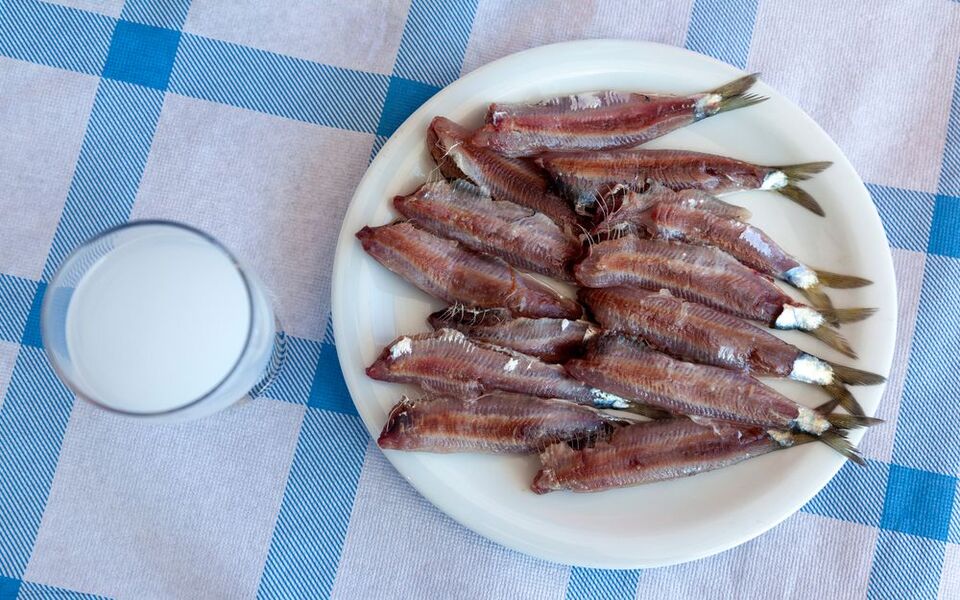You’ll find great food with interesting altercations throughout Greece’s islands and the mainland, but if you’re serious about food and don’t have all the time in the world, head to any of these islands for a particularly rewarding experience. The ideal way to truly savour an island’s gastronomy is to ask around, especially if you meet locals you can trust won’t send you to their cousin’s taverna for typical tourist fare, and as always, eat where the locals eat. All the islands mentioned here also offer cooking classes and gastronomuc experiences for visitors, another wonderful way to experience local food first-hand.

© Shutterstock
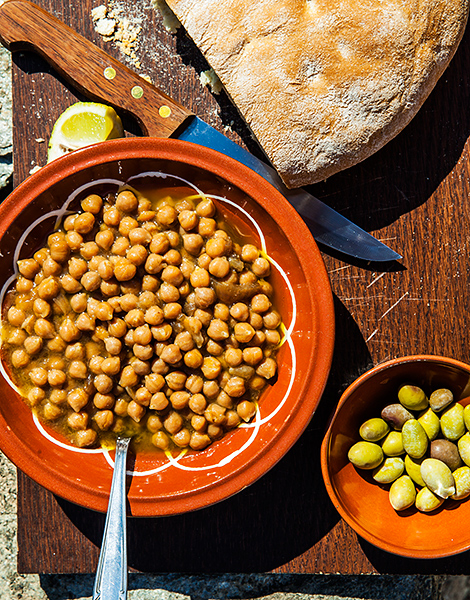
© Dimitris Vlaikos
Sifnos
With its whitewashed villages and over 350 white churches with blue domes, lace-like coastlines, rich pottery tradition and gnarly ancient olive trees, Sifnos draws tourists who love authentic Cycladic beauty. Its exquisite gastronomy, centred around fresh ingredients from the land and sea, has been known by Greeks for a long time and is gradually being discovered by foreign foodies who love traditional cuisine. As host island of the annual Gastronomy Festival, Sifnos has been building its reputation as a gastronomic destination without the crowds and accompanying noise you’ll come across in more famous islands, like Santorini.
Get Your Tastebuds Around… the various renditions of chickpeas, the island’s staple legume. Try revithada, slow-cooked overnight in a ceramic pot with olive oil, lemon and rosemary or ground and made into revithokeftedes, chickpea balls that have been fried to be fluffy in the middle and perfectly crunchy on the outside.
Head to the pretty Hersonissos fishing village to try a variety of succulent fresh seafood like caramelised octopus and grilled calamari. Order the white, tangy and creamy manoura and xinomizithra cheeses, fat, zingy capers to top all your salads or fava dip and the ambelofasoula (long string beans) shaken in olive oil, salt and lemon. For your sweet tooth, try the island’s almond-based amygdalota sweets sold at bakeries across the island.
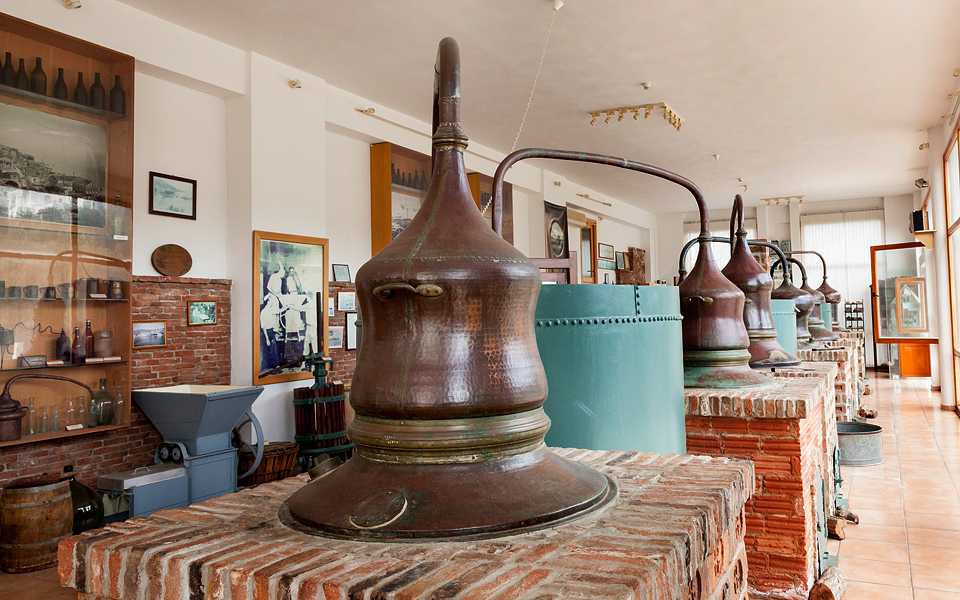
© Varvagianni Factory
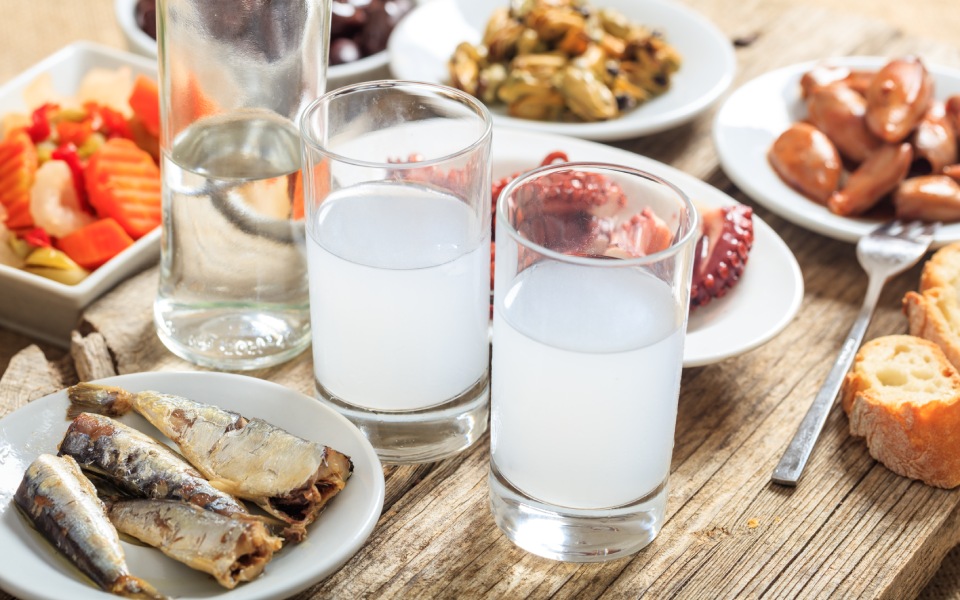
© Shutterstock
Lesvos
Broadly known for its major ouzo production, Lesvos is a large and multifaceted island that draws visitors to its beautiful ancient sites, many natural and organized hot springs, cultural tourism and beaches. Spending just one evening sitting at a table by the water and trying classic local meze dishes and mains, you’ll immediately understand why it’s a choice foodie destination too. Every July the island hosts the Lesvos Food Festival (this year from the 13th to 17th) showcasing the island’s many quality food and drink products, such as an orange wine made from the local Chidiriotiko grapes, and traditional dishes.
Get Your Tastebuds Around… Lesvos’s high-quality olive oil, delicious cheeses such as the local ladotyri, feta from Mytilini and kasseri from Eressos. One of the most delightful types of food to be sampled in all its variety here is the seafood and fish, however. Try the lakerda (tuna or mackerel steaks that are salted and then preserved in olive oil) is as melt-in-your-mouth tender as a high quality piece of sushi fish, as are the sardines from Kalloni, which have been cured in salt before being served lightly coated in olive oil.
Steamed or sauteed shellfish or added to a melted cheese saganaki with a spicy sauce are also delicious and especially when served with ouzo and almyra (sea samphire) salad. Also try the island’s sougania dish, onions that are stuffed with mined beef and rice, the sfougato fluffy omelette with courgettes and wild herbs and the giouzlemedes cheese pies.
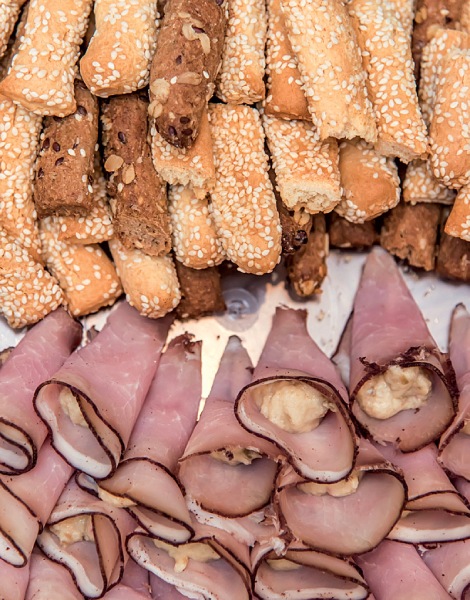
© Evelyn Foskolou
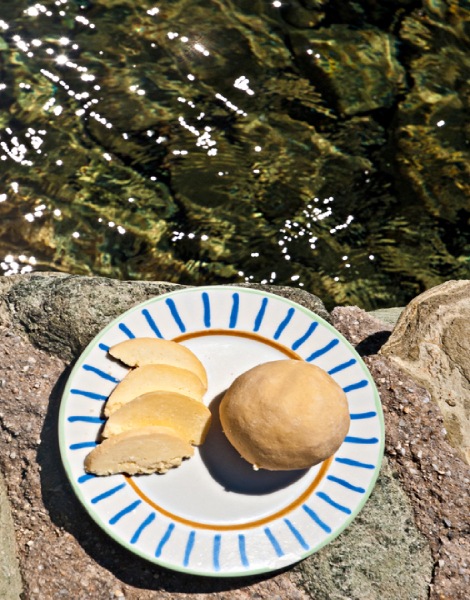
© Evelyn Foskolou
Tinos
Home to Greece’s leading religious pilgrimage destination, the Holy Church of Panagia Evaggelistria of Tinos in its main town, Tinos is also an island of windsurfers, jazz lovers and foodies. With a multitude of scenic villages like Agapi and Isternia and Pyrgos and lovely beaches, from organized to wild, the island is a pleasure to explore while enjoying delicious bites. Unlike its direct neighbour Andros, the Cycladic island has become known for its delectable cheeses, seafood and other products and if you’re there at the right time you may find yourself tasting a plethora of locally made dishes at one of the festivals, such as the Artichoke festival.
Get Your Tastebuds Around… Green things that taste yummy because they grow naturally and are served with verve, like the island’s above-mentioned artichokes (pickled, added to a delicious pie, fried or eaten a la polita), capers (liberally sprinkled on salads and fava, or if large, fried in batter), kritamo (perfect alone with just olive oil and lemon)and fennel leaves (traditionally mixed into crispy marathokeftedes patties.
Cheese lovers shouldn’t miss out on the buttery, crumbly volaki cheese, malathouni or sklavotiri cheeses, and if you like your cheese tangy definitely try the blue kariki cheese. Also worth trying is the local louza, a type of bresaola cured ham that’s delicious with fresh figs, cheeses and bread. You’ll also find seafood in abundance served freshest at the seaside restaurants across Tinos.
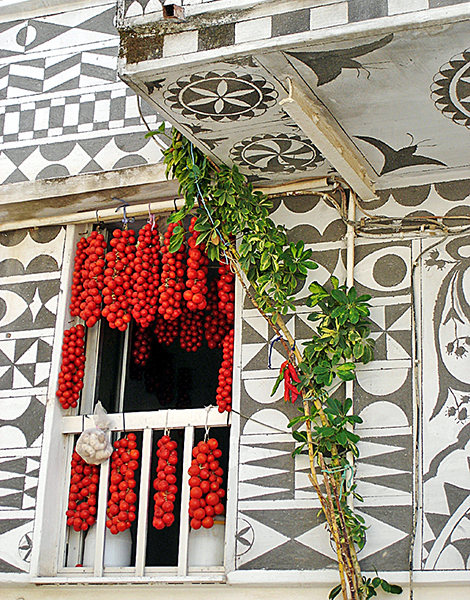

© Perikles Merakos
Chios
Almost synonymous with mastic, the delicious and health-giving tree sap it has been producing for centuries across 24 ‘Mastichochoria’ villages, Chios has several gustatory delights to offer visitors. Not that the incredible array of mastic-inspired dishes, sweets and liqueurs that can be sampled on the island are not enough in themselves. From seafood to herbaceous patties of all kinds and singular cheeses, as well as a broad choice of syrupy spoon sweets and liqueurs made with local fruit, this fish roa (tarama) ere is much to discover.
Get Your Tastebuds Around… Spinach, fennel and all kinds of herbs are commonly turned into fluffy, crunchy fried patties (keftedes) as are common staples in the Chios kitchen, as are taramokefetades, made with fish roe, chard and spinach and served with a tomato sauce, and patatokeftedes, made with potato and mint. Herby pies, or hortopittes are another local delight including a flavoursome blend of cheeses, herbs and other greens, and in Chios you can also try gonopita, made with baby squid. Try also the tambouropites (made with yellow pumpkin, also used as a creamy stuffing for the handmade local ravioli.
From springtime to early summer you can taste a fluffy omelet made with poppy leaves before they bloom. Meats like rabbit, pork or beef are usually added to hearty stews with tomatoes, garlic, plenty of olive oil, onion and potatoes with plenty of spices and herbs, and sometimes handmade pasta. Chios is also known for its citrus fruit production and especially mandarins, which you can enjoy as an invigorating juice, spoon sweet or ice cream.
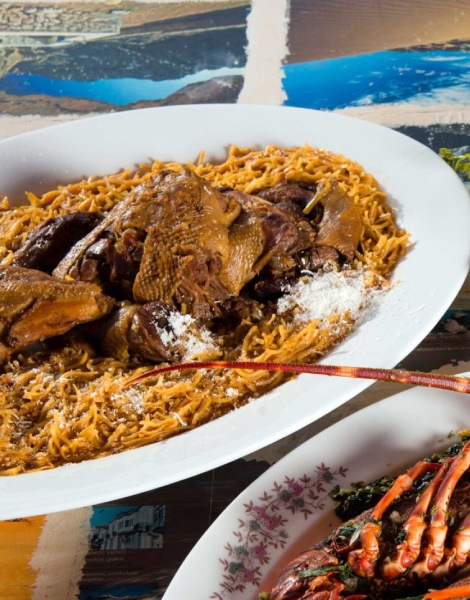
© Angelos Giotopoulos
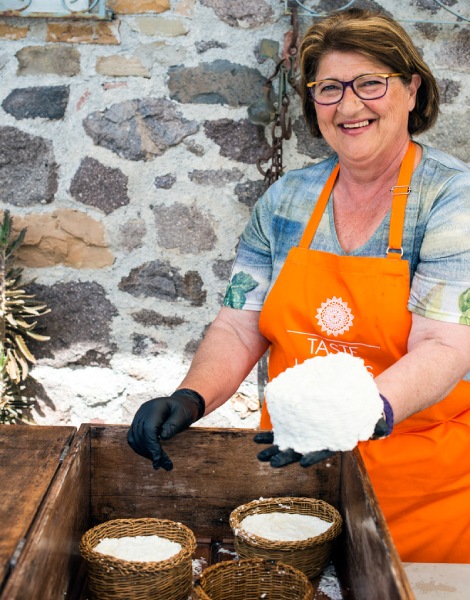
© Angelos Giotopoulos
Limnos
Not only an extraordinary wine destination with stunning beaches, Limnos is also becoming more and more appreciated for its exceptional cuisine and especially for how its volcanic soils, wetlands and plains affect food production and flavour. Delecious honey, cheeses, pasta dishes are just some of the locally produced foods celebrated annually at the Lemnos Philema” Gastronomy and Wine Festival.
Get Your Tastebuds Around… Cheese, glorious cheese! Start with the ancient kalathaki Limnou, a cheese made from sheep and goat’s milk; then try the melihoro ‘dark’ cheese, (as it is kept in dark or shady places as it matures), and the pungent and buttery kaskavali, that Limnians have enjoyed since Medeival times. Sample legumes made in a variety of ways – black eyed beans, chickpeas and fava cooked with different sauces or combined with other ingredients to make patties, breads and stews. Don’t miss out on a dish of flomaria, a small handmade pasta slow-cooked with meat and tomato sauce.

